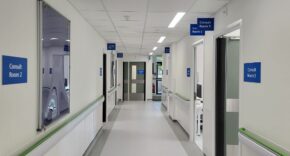NHS national screening services have faced various challenges, so the NHSX have been working with NHS Digital, NHS England, Public Health England (PHE) and the Department of Health and Social Care to understand the challenges and work on solutions.
There has been media coverage on errors made regarding breast and cervical screening appointments that patients have not been invited to, as well results that weren’t sent through on time. This resulted in people not having their cancer diagnosed early enough. Manual processes leave room for human error, which was the cause of the missed screening appointment invitations.
The first service that will be focused on is cervical screening. The NHSX will design methods to address service delivery beyond the technology aspect. It is crucial to understand the back-end processes involved when people are invited to screening appointments, and how GP surgery data affects the medical staff processing the various samples in the labs.
The NHSX are partnering with PHE and NHS Digital to run a study in order to understand the processes and needs of the staff who take and analyse samples, and those that attend the screening. The user research is being carried out in sexual health clinics, GP practices and cytology labs.
They are mapping the service from beginning to end and starting with the candidates who are selected for screening invitations, up until how patients move to cancer care. This service is complex, and has various online and offline stages which are delivered by different departments of the NHS and private organisations.
One of the examples of the processes that are being analysed is nurses labelling samples that need to be sent to the lab. A form needs to be printed for each patient, and their names and addresses need to be written in and stuck onto the sample pot. When speaking to one of the nurses, she raised her concern that they could make a mistake. Lab visits will also be made to understand their processes when analysing and testing samples from start to finish.
An observation that was made in the current procedures in place, is that valuable time is being used in appointments because nurses have to enter clinical information into two different digital systems while the patient is present. Appointments are only 15 minutes long, and this time could rather be used to speak to the patients about things like birth control and sexual health.
In addition, they will be speaking to people who have had screening, and also people who are eligible but have not yet attended a screening. People who are less likely to attend like people with a physical disability or are from ethnic minority groups will be included when appointment invitations are being sent out. This will ensure that the services offered benefit more people, and ultimately save more lives.
Article source: https://healthtech.blog.gov.uk/2019/08/20/were-learning-about-cervical-screening/












